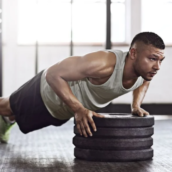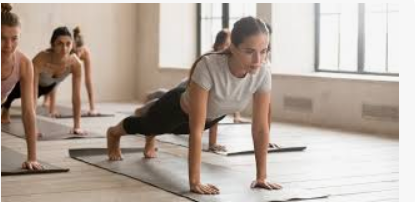How to Improve Posture with Exercises: A Complete Guide

Introduction
Good posture isn’t just about looking confident—it’s essential for long-term spinal health, reducing pain, and improving overall well-being. Unfortunately, modern lifestyles (like sitting at desks or staring at phones) often lead to slouching, rounded shoulders, and back discomfort. The good news? You can learn how to improve posture with exercises that strengthen weak muscles and stretch tight ones.
In this guide, we’ll break down the best exercises to correct posture, explain why they work, and provide a step-by-step approach to standing taller and feeling better. Whether you’re dealing with “tech neck” or lower back strain, these movements will help realign your body naturally.
1. Understanding the Importance of Good Posture
Before jumping into exercises, it’s essential to grasp why posture matters—not just for appearance, but for long-term health. Poor posture doesn’t just cause temporary discomfort; it leads to chronic issues that worsen over time. Here’s a deeper look at the consequences of bad posture and why corrective exercises are crucial.
1. Chronic Neck and Back Pain
Slouching or hunching shifts your spine out of its natural S-curve alignment, placing excessive stress on muscles, ligaments, and joints. Over time, this leads to:
- Tension headaches (from forward head posture, or “tech neck”)
- Herniated discs (due to uneven pressure on vertebrae)
- Muscle imbalances (overworked upper traps, weak lower traps)
How exercises help: Strengthening the upper back and core redistributes the load, reducing strain on overworked muscles.
2. Reduced Lung Capacity
When you slouch, your rib cage collapses inward, compressing the diaphragm and limiting oxygen intake. Studies show poor posture can decrease lung function by up to 30%, leading to:
- Fatigue
- Poor concentration
- Lower endurance
How exercises help: Opening the chest with stretches (like doorway pec stretches) and strengthening the upper back allows for deeper, more efficient breathing.
3. Digestive Issues
Hunching compresses abdominal organs, which can:
- Slow digestion (leading to bloating and discomfort)
- Contribute to acid reflux (due to increased intra-abdominal pressure)
How exercises help: Core-strengthening moves (like dead bugs) improve intra-abdominal pressure regulation, while posture drills encourage proper organ alignment.
4. Lower Energy Levels
Misalignment forces muscles to work harder just to keep you upright, draining energy. Ever felt exhausted after sitting all day? That’s postural fatigue.
How exercises help: A stronger core and back reduce the effort needed to maintain good posture, conserving energy.
The Key: Balance Strength + Flexibility
- Weak muscles (core, glutes, upper back) fail to support the spine.
- Tight muscles (chest, hip flexors, hamstrings) pull the body into misalignment.
This is why learning how to improve posture with exercises—combining strength and mobility work—is the only lasting solution.
2. Strengthening Exercises for Better Posture
A. Plank for Core Stability
Why it’s essential: Your core isn’t just abs—it’s a 360-degree support system for your spine. A weak core forces the lower back to overcompensate, leading to swayback posture (excessive arching).
How to Do It Properly:
- Start in a forearm plank (elbows under shoulders, body straight).
- Engage your glutes and abs to prevent sagging hips.
- Hold for 30-60 seconds (start with shorter holds if needed).
Pro Tip: If planking hurts your lower back, modify by dropping to your knees or elevating your hands on a bench.
Why It Works:
- Activates the transverse abdominis (your body’s natural corset).
- Teaches full-body tension control, crucial for maintaining posture.
Variations to Progress:
- Side plank (targets obliques for rotational stability)
- Plank with shoulder taps (adds anti-rotation challenge)
B. Rows for Upper Back Strength
Why it’s essential: Rounded shoulders often stem from weak rhomboids and rear delts, overpowered by tight pecs. Rows counteract this pull.

How to Do It Properly (Bent-Over Row):
- Hinge at hips, slight knee bend, back flat.
- Pull elbows back (squeeze shoulder blades together).
- Lower slowly—control is key!
Best Tools:
- Resistance bands (loop under feet)
- Dumbbells (start light—form first!)
Why It Works:
- Strengthens mid-back muscles that retract shoulders.
- Improves scapular stability for smoother arm movement.
Common Mistakes:
- Shrugging shoulders (keep them down!)
- Using momentum (go slow—muscles should burn).
C. Glute Bridges for Hip Support
Why it’s essential: Weak glutes contribute to anterior pelvic tilt (duck butt posture), straining the lower back.
How to Do It Properly:
- Lie on back, knees bent, feet hip-width.
- Drive through heels, lift hips until body forms a straight line.
- Squeeze glutes hard at the top (no over-arching!).
Level Up:
- Single-leg glute bridge (doubles the challenge)
- Hip thrusts (add weight for strength gains)
Why It Works:
- Activates dormant glutes (many people have “lazy” glutes from sitting).
- Teaches proper pelvic alignment for standing/walking posture.
Key Takeaway:
These three moves form the foundation of posture correction:
- Plank = Core stability
- Rows = Upper back strength
- Glute bridge = Hip/pelvis alignment
Do them 3x/week for noticeable improvements in how to improve posture with exercises that deliver real results.
B. Rows for Upper Back Strength
Weak upper back muscles contribute to rounded shoulders.
- How to do it: Use resistance bands or dumbbells to perform bent-over rows (3 sets of 12 reps).
- Why it works: Strengthens the rhomboids and traps, pulling shoulders back.
C. Glute Bridges for Hip Support
Weak glutes force the lower back to overcompensate.
- How to do it: Lie on your back, lift hips upward, and squeeze glutes at the top (3 sets of 15 reps).
- Why it works: Activates the posterior chain, promoting a neutral pelvis.
By incorporating these moves, you’ll actively learn how to improve posture with exercises that build a strong foundation.
3. Stretching Exercises to Release Tight Muscles
A. Chest Opener Stretch
Tight pecs pull shoulders forward.
- How to do it: Clasp hands behind your back, lift arms, and open the chest (hold 30 seconds).
B. Hip Flexor Stretch
Sitting shortens hip flexors, tilting the pelvis forward.
- How to do it: Lunge with one knee down, tuck pelvis, and lean forward (hold 20-30 sec per side).
C. Neck and Shoulder Release
“Tech neck” strains cervical muscles.
- How to do it: Gently tilt your ear toward your shoulder (hold 15 sec per side).
These stretches complement strength work, ensuring muscles aren’t pulling you out of alignment.
4. Daily Habits to Maintain Proper Posture
Exercises alone aren’t enough—you must reinforce good posture daily.
- Set reminders to check your sitting/standing alignment.
- Use ergonomic setups (e.g., monitor at eye level).
- Walk regularly to counteract sitting stiffness.
Combining these habits with how to improve posture with exercises ensures lasting results.
Conclusion: Stand Taller Starting Today
Improving posture takes consistency, but the payoff—less pain, better breathing, and increased confidence—is worth it. By strengthening weak muscles, stretching tight areas, and practicing mindful alignment, you’ll stand taller effortlessly.















